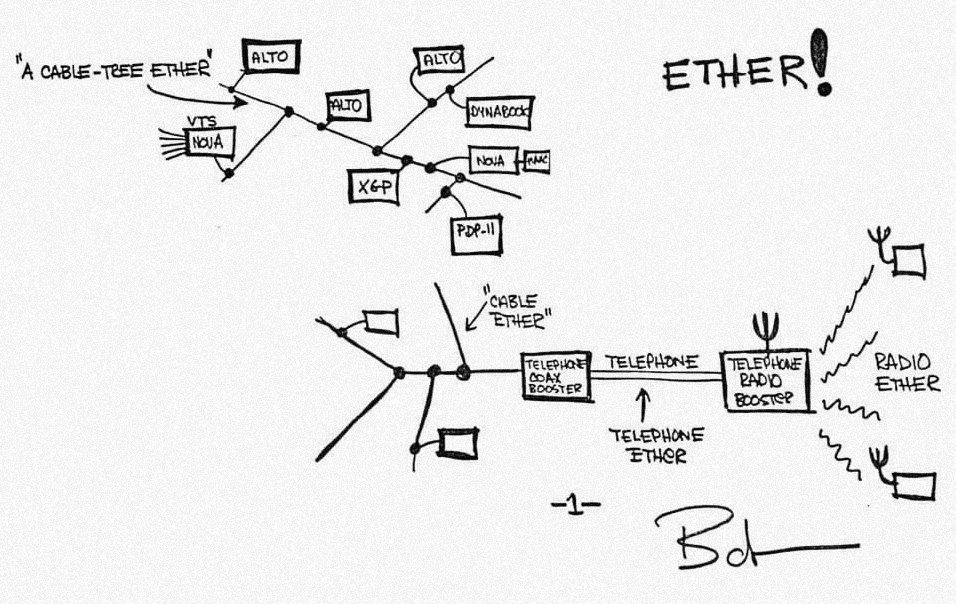


|
||
|
||

The idea for Ethernet was born fifty years ago in May 1973 when Robert Metcalf coined the word Ethernet. He had been studying ALOHAnet, developed at the University of Hawaii in 1971 and was the first public demonstration of a wireless packet data network. Metcalf used the work Ethernet as a reference to luminiferous aether, a concept postulated in the 17th century to explain how light could be transmitted through a vacuum.

Xerox filed a patent for Ethernet in 1975 that listed Metcalf, David Boggs, Chuck Thacker, and Butler Lampson as the inventors. Metcalf left Xerox in 1979 and formed 3Com, which eventually was purchased by Hewlett-Packard. If you’ve been in the industry for a while, you’ll remember the first 3Com routers and switches. As part of the transition to 3Com, Xerox gave up the Ethernet tradename, and Ethernet became a worldwide standard in 1980 with the first standard labeled as “The Ethernet, A Local Area Network. Data Link Layer and Physical Layer Specifications”.
Ethernet is a family of computer networking technologies that is the heart of modern computing. The Ethernet standard divides a stream of data being transmitted into shorter pieces called frames or packets. Each frame contains the needed data transmission details, including the transmission’s source and destination. Each frame includes error-checking data that can be used at the receiving end of a transmission to ensure all intended data packets are received.
The use of frames is the basis for how the Internet functions. If data is sent to your home broadband router, the router checks to see if each incoming frame is complete. Your home router will send a request to retransmit any frame that showed up incomplete. Most people think that data is simply sent and received, but the reality is that there is a complex system of error-checking and resending missing frames that happens behind the scenes.
The system of resending incomplete packets explains why connecting to a server on another continent is slower than connecting to a server much closer to where you live. The farther data has to travel, and the greater the number of intermediate data switching points, the higher the chance that incomplete frames make it to the destination—and the longer it takes to replace incomplete or missing frames.
This is also part of the reason why a connection like a Zoom call is often of lower quality on a low bandwidth connection. When the broadband speeds aren’t fast enough, there is a delay in getting enough frames delivered to create a coherent picture in a real-time Zoom connection. When frames are missing or show up late, the Zoom call pixelates or has voice quality issues because not all needed data frames were delivered in time.
Ethernet was first used inside wired local networks, such as between campus buildings or inside a business, to create WAN and LAN connections. But it quickly became the standard for public data transmission and became the heart of the Internet. Ethernet is used in all common broadband technologies, from DSL, fixed wireless, and fiber data transmission. Ethernet is used in the WiFi connection between your home broadband router and your home devices.
The protocol had an original data rate of 2.94 Mbps. The current Ethernet standard supports speeds up to 400 Gbps, but data rates up to 1.6 Tbps are under development. Since the 1980s, the Ethernet standard has continuously been updated and improved and now allows for the complex routing protocols in place to operate the Internet.
Sponsored byVerisign

Sponsored byWhoisXML API

Sponsored byIPv4.Global

Sponsored byRadix

Sponsored byDNIB.com

Sponsored byVerisign

Sponsored byCSC
